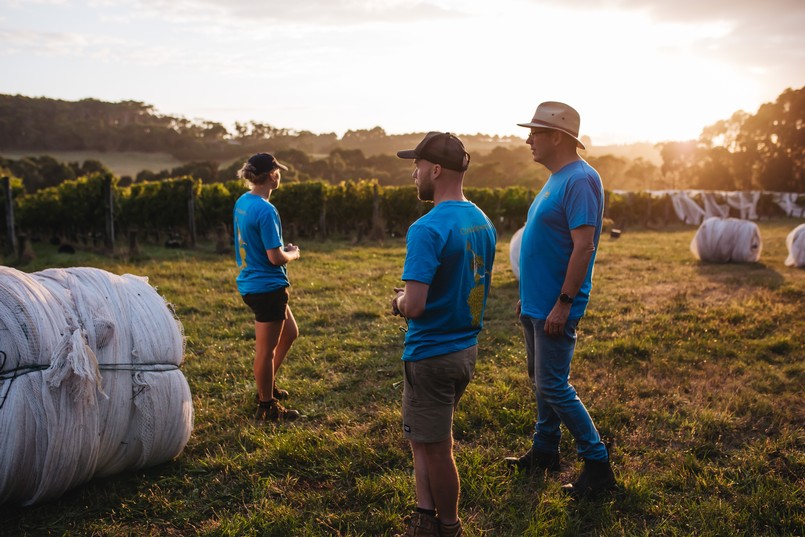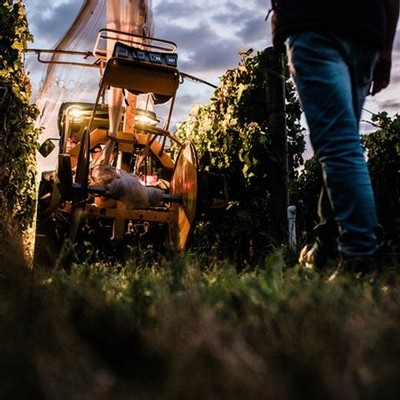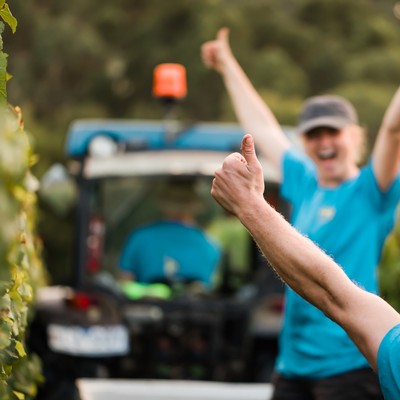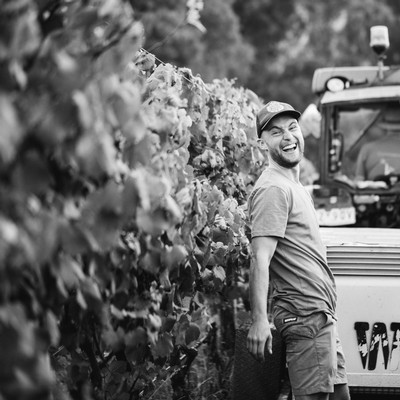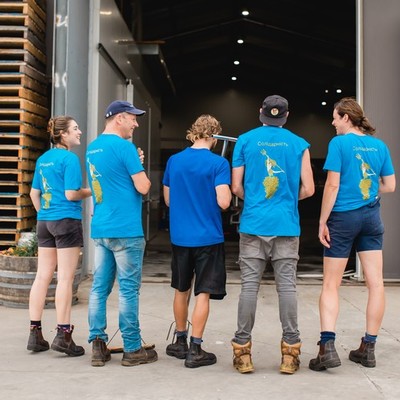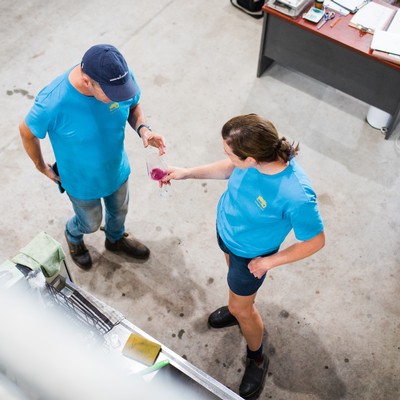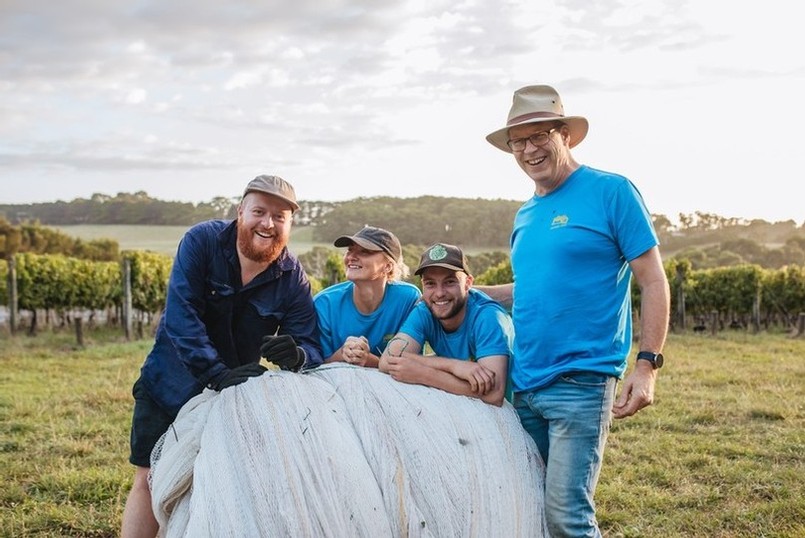News
Introducing the Trahere
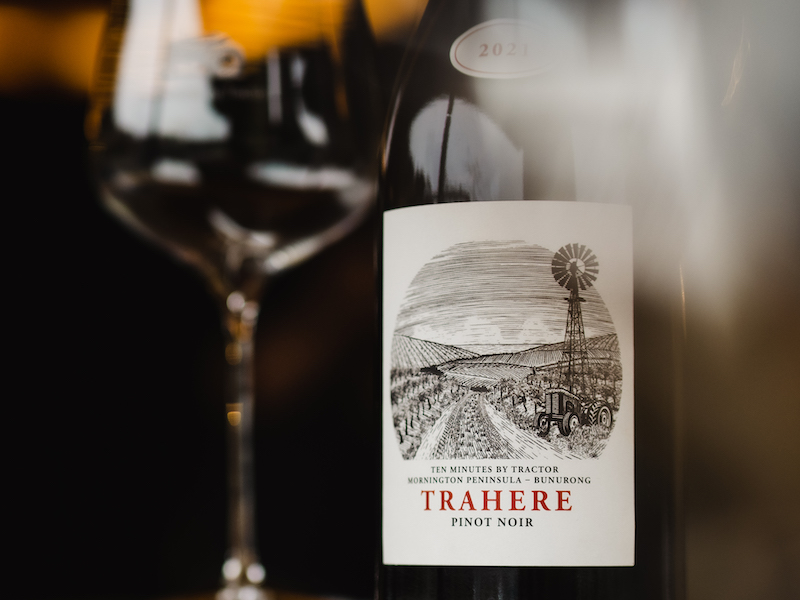
These limited release wines are inspired by our high density vineyards in Main Ridge, the culmination of years of planning, hard work and passion. It is the beginning of an exciting new journey...
Latin verb: to draw or pull.
Derivatives: tract (a tract of land), tractor (a vehicle that pulls), protract (to draw forward), traction (to make progress), and contract (to bring together).
This limited release wine is a culmination of these elements; the land we work and care for, our drive to make progress and pull forward, our passion to learn and to bring people together to produce the best wines possible, from this Bunurong land. The Trahere Chardonnay and Trahere Pinot Noir are the ultimate expression of our beautiful vineyards, the vintage and ourselves.
Broadsheet | First Look: Allis, the Casual Wine Bar by Revered Mornington Peninsula Estate Ten Minutes by Tractor
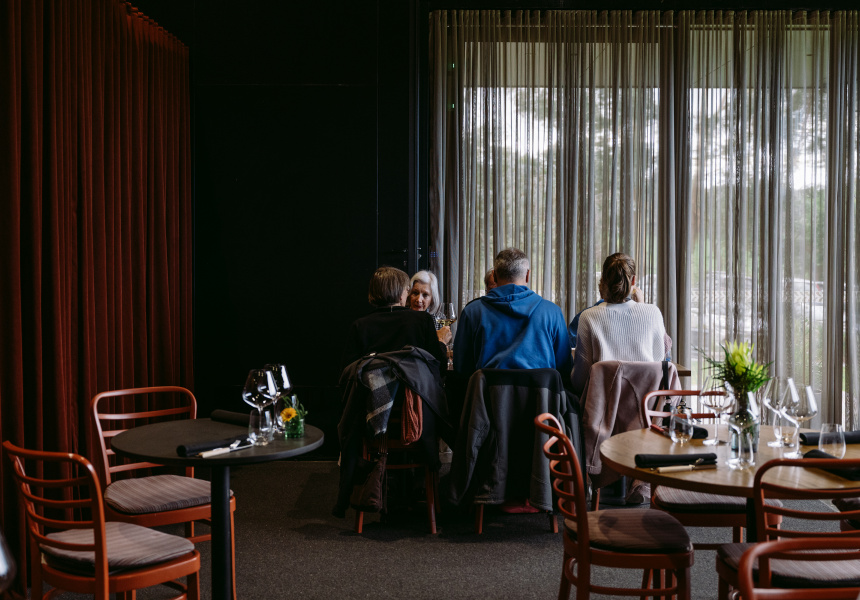
The cellar door has been revamped and turned into a sustainable wine bar. A selection of current- and back-vintage drops come with matched snacks, while inventive small plates utilise offcuts from the restaurant and produce grown on-site.
Ten Minutes by Tractor is one of the Mornington Peninsula’s top fine diners. A reservation can be hard to snag, and the team recommends allocating at least three hours to enjoy head chef Hayden Ellis’s $195 five-course tasting menu (there’s also a condensed three-course version on Thursdays and Fridays).
Karen and Martin Spedding, owners of the of Main Ridge winery and restaurant, noticed demand for a casual alternative to their high end set-menu experience. So, they repurposed their recently renovated cellar door and last month opened Allis, an all-day wine bar with a low-waste ethos.
“It seemed like a natural fit for us,” Karen tells Broadsheet. “I thought the space looked amazing and it would be really nice to use it in a wine-bar context.”
At Allis, the wine list is made up current- and back-vintage Ten Minutes bottles and a few international options from producers like Robert Weil and Pierrick Laroche. There’s a lot to choose from, but Karen insists visitors shouldn’t be intimidated.
“It’s been our ethos from day one to share our love of wine and education [about] wine,” she says. “We have a great [team] who can gauge people’s interest and where they’re at in terms of their wine journey.”
Despite the transition from cellar door to wine bar, guests can still taste the Ten Minutes by Tractor range, including with a flight of either chardonnay or pinot noir. There’s an option to pair each flight with snacks for $60 a head.
Also on offer is a menu of thoughtful and approachable small plates (priced between $10 and $55) developed by chef Charlie Yates, former head chef at the now shuttered Petit Tracteur, who’s worked in the Ten Minutes by Tractor kitchen since 2016. Most produce comes from 10X, the on-site garden, and dishes make use of offcuts from the restaurant. “We’re trying to create a symbiotic relationship [between the two venues],” says Karen.
Carrots are harvested daily when in season. They’re roasted with fennel and served on crumpets along with horseradish liquorice, brown-butter hazelnuts, pickled fennel and oil made from the carrot tops. Over the coming months, a prolific batch of turnips will be fermented and used across the menu in dishes like charred kangaroo carpaccio with crispy capers and horseradish. Even the oil that accompanies the Jetty Road-beer-and-buttermilk bread is house-made, using olives grown in the estate’s Judd Vineyard.
Ten Minutes by Tractor is named for the time it takes to travel between the three vineyards that originally made up the estate (which has since grown to a total of six vineyards). With that in mind, the Speddings named their new venue after the burnt-orange-coloured Allis-Chalmers farm tractors.
The bar’s interior blends its namesake machine’s signature shade with charcoal walls and honey-hued timber tables. Cathedral ceilings and tall windows create an expansive feel in the otherwise cosy venue, which also features handmade bricks with a sunset colour inspired by the soil at the estate’s 23-year-old Coolart Road Vineyard.
Allis
1333 Mornington Flinders Road, Main Ridge
(03) 5989 6455
Hours: Fri and Sat 11am–9pm, Sun 11am–6pm
alliswinebar.com.au
To read more visit Broadsheet
By Quincy Malesovas for Broadsheet Melbourne
Lamington X Snickers Bar Recipe by Chef Hayden Ellis
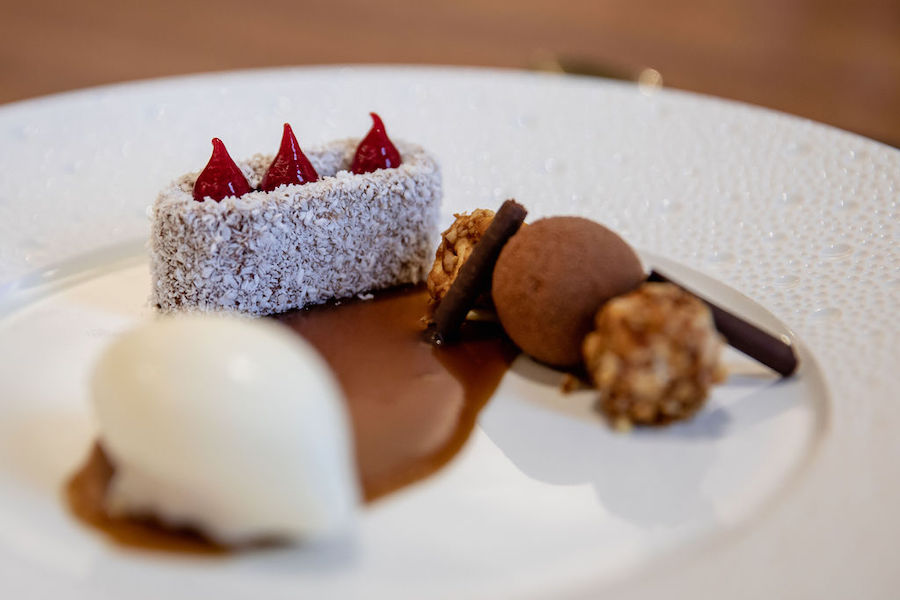
Serves 8, Prep time 4hrs total
You’ll need:
Thermometer
Silicon moulds
Lamington
1L cream 450g dark chocolate 70%
215g sugar 5 whole eggs
150g sugar 8 sheets gelatine, bloomed
1. Melt chocolate on double boiler
2. Bring smaller quantity and a small amount of water to 121°c
3. While sugar is on stove beat the eggs until light and fluffy in a mixer
4. Melt gelatine in a sauce pan gently until a liquid
5. Add the 121° sugar into eggs and add melted bloomed gelatine
6. Mix until just above room temperature
7. Add egg mix to melted chocolate
8. Beat cream and sugar until soft peak then fold into chocolate.
9. Pipe into rectangle moulds and freeze
10. Demould, leave to defrost then coat in shredded coconut
Vanilla Sponge
330g egg whites 100g plain flour
7g powdered egg white 4g baking powder
170g sugar ½ tsp vanilla paste
115g water
1. Bring sugar and water to 115°
2. Whisk egg white and powder to soft peak
3.Add sugar and vanilla to the soft whipped egg whites and whisk until room temp
5. Sift baking powder and flour together then fold in, in 3 batches
6. Spread onto 2 separate greased baking paper trays, approx. 5mm thick.
7. Cling film and steam for 13 minutes
8. Freeze, once frozen cut into rectangles, same shape as lamington moulds
Raspberry Gel
200g raspberry puree 1tspn raspberry vinegar
50g sugar 2.5g agar agar
1. Place all ingredients in a pan except the agar and bring to a boil
2. Whisk in the agar and continue to whisk for 30 seconds while boiling
3. Pour into a tray and leave to set
4. Once set blitz until smooth in a food processor or with a hand blender.
Beef Caramel
90g rendered beef fat 40g stout beer
160g glucose 375g stout beer reduced to 37g
160g sugar 5g dried yeast
5g salt 170g cream
800g beef stock reduced to 80g
1. Heat cream and yeast in pan
2. In another pan bring all other ingredients to 117°, then deglaze with cream
3. Cool in fridge and re heat with a little bit of cream to serve.
Peanut Nougat
500g roasted peanuts, chopped 220g sugar
65g unsalted butter, melted 85g honey
110g white chocolate 120g glucose
35g water 1 egg white
1. Separate into 2 pots, honey, sugar, water and glucose
2. Bring 1 pot to 122° and the other to 157°
3. Melt chocolate over double boiler
4. Whisk egg whites with a pinch of salt to stiff peaks in a mixer and add the 122° sugar mix
5. Add the 157° sugar mix to the whites while still mixing
6. Slowly add the butter and keep whisking for 5 minutes, then add melted chocolate
7. Stop the mixer then fold in peanuts and place in a tray and leave to set
8. Once set, roll into balls or cut into desired shapes
To Serve:
1. Spread 1 Tbsp of Beef caramel on the centre of a plate
2. Place vanilla sponge on the plate at one end of the caramel then place the lamington on top
3. Pipe some raspberry gel on top of lamington and a few dots around the plate
4. On the opposite end of the lamington place 2 nougat balls
5. Place a scoop of vanilla ice cream in the centre.
Forbes: These 10 Wineries With Outstanding Restaurants
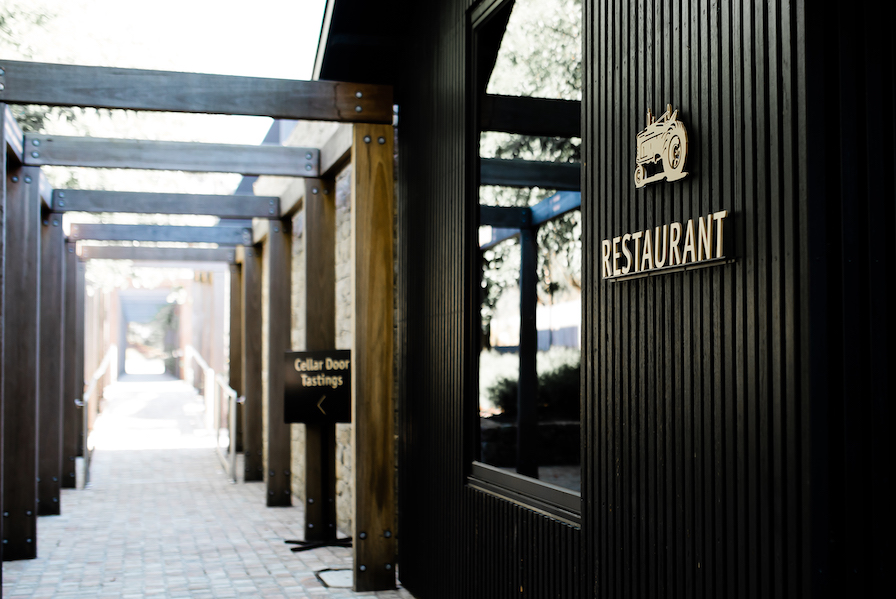
It’s 2023, and most wineries have fairly decent food—some local cheeses, cured meats and often a proper three-course lunch. But some of them are going far and above, installing Michelin-star (or Michelin-caliber) chefs on the premises and letting them run free with their technique and creativity. And of course, the wine pairings are always spot-on. Here, in alphabetical order, are ten of the most interesting right now.
Ten Minutes by Tractor, Mornington Peninsula, Australia
Ten Minutes by Tractor is the convergence of wine journeys that began almost 40 years ago with a group of people and vineyards that came together. While southwest Australia has its share of sophisticated wineries, Ten Minutes by Tractor stands out for having an equally sophisticated restaurant. Head chef Hayden Ellis is a Kiwi-born lover of local farming, foraging and worldly flavors. His innovative menu is driven by creating a powerful connection between food, wine and nature.
To read more visit Forbes.
Max Allen's Top Wines of 2023

When you look back at your life, what moments come to mind? Milestones of family and friends, births, deaths and marriages, for sure. But what else? Some remember significant sporting moments: the season their team won the flag, or where they were when Sam Kerr kicked that goal. Some think of holidays they took. Others recall memorable meals....So here, for my annual round-up of top drinks this year, I’ve compiled a list of the bottles I’ll look back on to remind me of 2023.
Ten Minutes by Tractor Trahere Pinot Noir 2021
First tasted at the winery last year, tasted again at the Pinot Noir Celebration on the Mornington Peninsula early this year, and now finally released for sale, this is Ten Minutes by Tractor’s top cuvée of pinot. Sourced from the best blocks of various vineyard sites – including some newer, very high-density plantings – this wine has more weight than most of the pinots from this winery and this region. Concentrated, dark, almost voluptuous pinot fruit, but also has superb finesse and length of flavour.
To read more visit Australian Financial Review.
By Max Allen for AFR
Nov 24, 2023
Our Favourite Restaurants in Red Hill
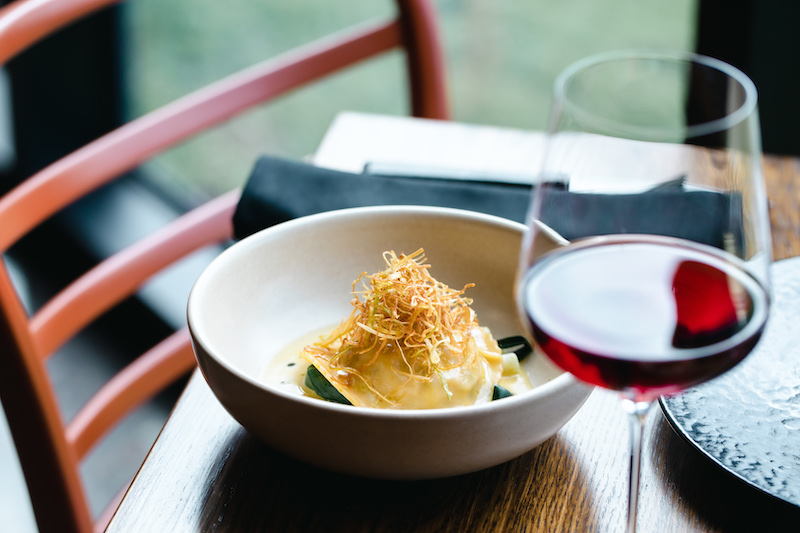
Located in the picturesque region of Victoria, Australia, Red Hill and Main Ridge offer a delightful array of culinary experiences for all food lovers. From quaint cafes to fine dining establishments, this region is a paradise for those seeking a memorable gastronomic journey. Here are some of the great restaurants to choose from in Red Hill and Main Ridge.
MANY LITTLE
Many Little offers a Modern Asian – Sri Lankan inspired cuisine.
2-5/159 Shoreham Rd, Red Hill South | 03 5989 2831
Dinner: Thurs - Sun
Lunch: Sat - Sun
FOXEY'S HANGOUT
Winemaker Tony Lee is a qualified chef & his dishes complement the wines. Many dishes change seasonally.
795 White Hill Rd, Red Hill | 03 5989 2022
Lunch: Fri - Mon (11-5pm)
ALLIS WINE BAR
Our new wine bar located in the cellar door featuring produce from our regenerative farm and the wider hinterland of the Mornington Peninsula.
681 Nepean Road, McCrae | 03 5982 1130
Dinner: Wed - Mon
MERRICKS GENERAL STORE
Merricks General Store is set in a beautiful country setting featuring great food and outstanding local wines.
33 Shoreham Road, Red Hill | 03 5989 8412
Breakfast & Lunch daily
MORNING SUN
Morning Sun is one of Foxeys Hangout’s single-vineyard sites. They serve shared plates inspired by this property’s Italian family heritage.
337 Main Creek Road, Main Ridge | 03 5989 6571
Lunch: Thurs - Sun (11-5pm)
TEDESCA OSTERIA
Tedesca Osteria is a more rustic dining experience based on Mornington Peninsula produce with a kitchen built around a wood fired oven & grill.
1175 Mornington Flinders Rd, Red Hill | 03 5989 9011
Lunch: Fri - Mon
PORT PHILLIP ESTATE
Panoramic views across the vines to Westernport Bay.
263 Red Hill Road, Red Hill | 03 5989 4444
Lunch: Wed - Sun, Dinner: Fri - Sat
LAURA AT PT LEO
Set amongst a 50 acre vineyard and sculpture park, this fine dining restaurant features local seasonal produce.
3649 Frankston - Flinders Rd, Merricks | 03 5931 2500
Dinner daily
PARINGA ESTATE RESTAURANT
An exciting and imaginative menu of colourfully presented, modern Australian cuisine.
44 Paringa Road, Red Hill | 03 5989 2669
Lunch: Wed - Sun, Dinner: Fri - Sat
POLPERRO
Fresh, textural & seasonal flavours with an emphasis on where the food comes from and how it is grown.
150 Red Hill Road, Red Hill South | 03 5989 2471
Lunch: Wed - Sun
Whether you're a food enthusiast seeking culinary adventures or simply looking for a memorable dining experience, the restaurants in Red Hill and Main Ridge are sure to satisfy your cravings. With a plethora of options ranging from casual cafes to upscale establishments, this region is a true haven for food lovers. Indulge in the flavors of this breathtaking part of Victoria and let your taste buds embark on a culinary journey like no other.
2022 Vintage Overview
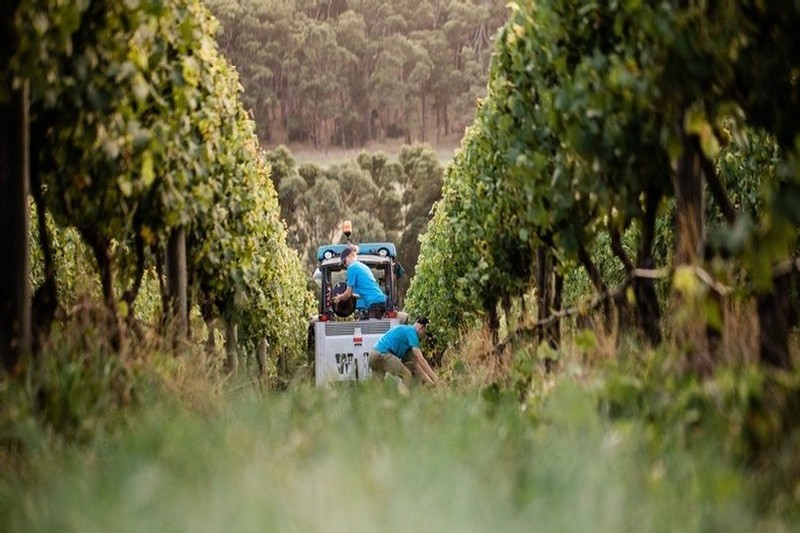
VINTAGE IN BRIEF
The 2022 season started with a very wet and variable spring, resulting in poor flowering, small bunches and reduced yields across many sites.
The exceptional summer and autumn months to follow provided perfect ripening conditions that generated great concentration and striking flavours across all varieties.
SOME NOTES FROM MARTIN
The 2022 vintage started with higher than average rainfall, occasional storms, some hail and cool daytime temperatures. Less than ideal flowering conditions! The variable spring weather and its impact on flowering resulted in large differences in yields between vineyards both up and down the hill.
This changed in December, when temperatures started to increase, and we had weeks of dry fine weather. After a little wet weather in early January, we enjoyed a dry growing season, with the exception of a downpour on March 4th which helped to freshened everything up and refill the dams. It felt like a switch had been turned in January and from that point we enjoyed one of the best summer and autumn seasons we have had for many years - perfect ripening conditions.
As a result of weather conditions during flowering, the bunches that developed were small, in fact, very small! Some blocks only averaging around 35-40 grams per bunch, compared to something around 110 grams to 120 grams normally. These beautiful little bunches and berries may have lacked weight, but they had incredible intensity of flavour and lovely chewy skins.
During picking and sorting of all our fruit on our sorting table in the winery, we had to take great care to separate the secondary bunches from the primary fruit. Secondary bunches develop on lateral shoots later in the season and these bunches do not fully mature, so hence they are much less ripe.
Usually, secondary bunches are easy to identify because they are (usually, but now always) smaller and have a slightly paler colour (reflecting their lack of maturity), but sometimes they can be difficult to detect. Given how small the primary bunches were in 2022, we had to take a spend of time on the sorting table to sort all these secondary bunches out. It was definitely a year where having the sorting table and taking that time to sort every pick was very important to the end quality.
Because of the small berries and high skin to juice ratio, the Pinot’s had amazing colour, flavour and tannin intensity. The wines are bright, concentrated, generous and the Pinots have a lovely plush velvety texture. Again, because in part of the small bunches we also reached phenolic ripeness earlier, so average alcohols are lower than normal.
It is still early days, but I believe the wine quality in 2022 is exceptional. They are quite different stylistically than the 2021’s (which I also loved) and they will definitely reward some patience to show their full potential.
Discover the 2022 Vintage wines.

KEY DATES (MAIN RIDGE PINOT NOIR DATES FOR 2021/22)
- Budburst – 23 August 2021 (av 6 Sep)
- Flowering – 12 Nov 2021 (av 20 Nov)
- Veraison – 12 Jan 2022 (av 5 Feb)
- Harvest – 5 Mar 2022 (av 27 Mar)
- Hang time – 185 days (av 201 days)
- Up v Down Difference – 15 days (av 17 days)
2022 VINTAGE HIGHLIGHTS
Recent Wine Reviews

Here is a selection of recent wine reviews we'd like to share with you.
2021 Judd Pinot Noir
From the highest vineyard in the winery stable comes this seductive pinot noir showing the benefits of whole bunches with fine cinnamon and five-spice aromas well supported by plush beetroot and rhubarb. Fleshy and welcoming dark cherry flavours follow before tightening up to a long and fine finish. - Angus Hughson, The Australian
2021 McCutcheon Chardonnay
An embryonic chardonnay, with delicious purity of fruit, intensity and definition with layers of nectarine and citrus aromas plus an exotic touch of tangerine well integrated with high-quality oak treatment. Young and tight, it is beautifully pitched for cellaring but also delivers impressive drinkability. - Angus Hughson, The Australian
2021 Coolart Road Pinot Noir
This intriguing and distinclly savourypinot noir is a beauty with a fascinating array of aromas from fennel seed and wintergreens through to wild raspberry. It's coiled quite tight thanks to sinewy tannins but then slowly builds to a long energetic finish. - Angus Hughson The Australian
2021 Judd Chardonnay - 98 pts
Dried-herb/straw and other more savoury aromas, small white flowers and chalky minerals, the palate likewise very dry and savoury, with phenolic and acid presence that lingers on the farewell, adding a certain texture, almost a thickness, that will go well with the right food. There is umami here. Lovely line and length, finesse, focus and great persistence, the aftertaste complete and harmonious. A stunning chardonnay. - Huon Hooke, therealreview.com
2021 Wallis Chardonnay - 96 pts
Light-medium yellow colour; rich stone-fruit, almond and even some tropical accents combine with sweet roasted hazelnuts and faintly buttery aromas, making for a complex bouquet. The wine is very intense, powerful and driving, with lively lemon-sherbety acidity powering it along. It fills the mouth and the finish has a gentle grip and a big fanfare at the end. (Vineyard is on Main Ridge. P58 clone) - Huon Hooke, therealreview.com
2021 Mills Chardonnay - 95 pts
Light-mid yellow hue; shaved almond and straw aromas, the palate delicate, refined and intense, with drive and persistence. A superb chardonnay, understated and finely tensioned, graceful and very long. This would take some age to advantage. (Vineyard is at Merricks North) Huon Hooke, therealreview.com
2021 McCutcheon Chardonnay - 94 pts
Light-mid yellow colour with a bouquet of almond, stone fruits and red apples, the palate fuller in body and it has quite a firm grip at the end, making for an emphatic finish. A slightly broader style that would go well with poultry. (Vineyard is on Main Ridge. P58 clone) Huon Hooke, therealreview.com
Why do high density planting?
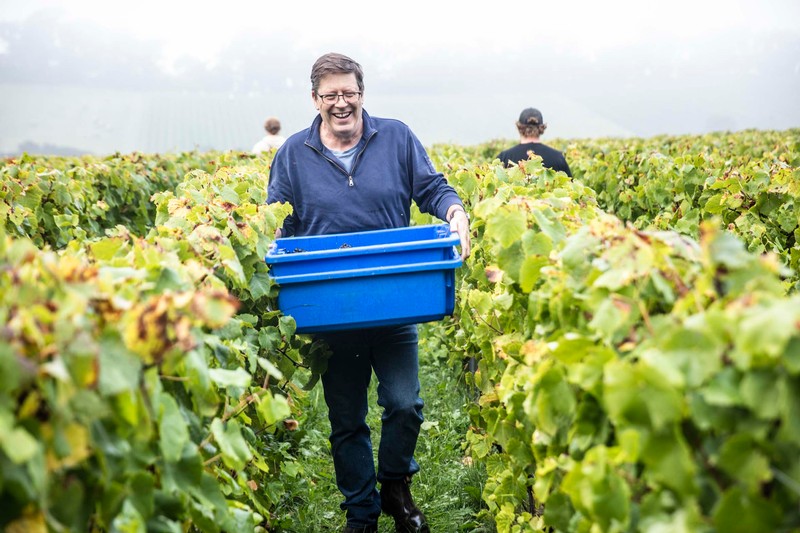
Historically, vine density and row spacing was a function of available land, equipment and techniques of the time. Pre-phylloxera vineyards in Burgundy were planted using a mass layering technique that resulted in very high planting densities (30,000 vines per hectare or more). Vines were arranged in a random pattern with all work in the vineyards done by hand.
In the late 1800s phylloxera destroyed the ‘own roots’ vines in Burgundy and the vineyards were subsequently replanted on American rootstock and arranged in the trellised rows we see today. This replanting coincided with the use of the horse as a labour-saving practice so vines were replanted in rows in the ‘classic’ 1m x 1m spacing. The row width was determined by the width of a horse; machinery that followed later was adapted to suit.
In Australia, as in France, vineyard density has also been determined by available machinery. However, in Australia commercial vineyard tractors are typically based on farm or orchard models with an overall width of 1.5m to 2m; this has necessitated vineyard rows of between 2.5m to 3.5m for adequate machinery access and clearance.
Over the past decade, many cool climate wine growers in Australia have learnt that vines grown with closer spacing between plants and rows have greatly improved quality outcomes. However, the density limit remains dictated by the tractor’s minimum width.
Around the world, consumers of high quality Pinot Noir and Chardonnay look to Burgundy as the benchmark region for the highest quality expression of the two varieties. This highlights the need for Australian producers to examine current practices and techniques and look for areas of potential quality improvement. Recently, commercial vine nurseries in Australia have begun importing new selections of highly regarded Burgundian Pinot Noir and Chardonnay clones that have been widely planted and credited for positive increase in wine quality and complexity.
In an ongoing effort to explore the influence of best viticulture practices on wine quality we have established this new High Density (HD) vineyard, made possible by importing some specialised European vineyard equipment able to work in 1m rows and allowing us to plant our vineyard at the same density used on the best slopes of the Cote d’Or.
Very early indications are that the new plant densities will have very positive impact on fruit quality which will help elevate the wine quality and structure to a higher level. Based on experience with other HD vineyards we expect to see…
- smaller berries and bunches
- better crop load balance
- more cross shading of canopy, fruit and vineyard floor
- humidity levels tend to be higher
- cane, bunch and berry stem lignification are more developed.
These are all key attributes for quality wine production and help to counteract climatic challenges such as sunburnt fruit and vine stress from dry soil and low humidity.
Discover more about our High Density Spedding Vineyard and Gabrielle Vineyard.
The Real Review - Close planted vineyards and wine quality

Close-planted vines produce better wine, no?
Well, they must, because the classic French wines from Burgundy, Champagne, Chablis, and most other places are grown in vineyards that are close-planted, much closer than typical Australian vineyards.
Most close-panted vineyards in Australia are very young, but youth may have been immaterial as the Bannockburn pair were by common agreement the hardest to tell apart.
But it’s not that simple.
What works in Volnay or Vouvray doesn’t necessary translate to Australian conditions.
A tasting at a workshop on close-planting, conducted as part of the recent Pinot Noir Celebration Australia on the Mornington Peninsula, was inconclusive.
The tasting was of eight glasses of pinot noir, two each from four producers. One was off a close-planted vineyard, the other off a conventional vineyard of the same producer, in the same locality, and using the same winemaking. All were MV6 clone.
The wines were Bindi Darshan 2019 (close) and Bindi Original Vineyard 2019; Ten Minutes By Tractor McCutcheon Vineyard 2022 and Ten Minutes By Tractor Spedding Vineyard 2022 (close); Bannockburn Estate 2019 and Bannockburn Serré 2019 (close); and Scorpo Old Cherry Orchard 2021 (close) and Scorpo Eocene 2021. The wines were randomised and the tasters were asked to try to tell which was the close-planted in each pair. Most—possibly all of us—failed to*.
Most close-panted vineyards in Australia are very young, but youth may have been immaterial as the Bannockburn pair were by common agreement the hardest to tell apart, although the Serré vines were mature (average age 39 years).
So, what drives vignerons like Bindi’s Michael Dhillon and Ten Minutes By Tractor’s Martin Spedding to plant vines at high density, which is estimated to cost at least four times as much to establish?
The panel laid out the advantages and drawbacks of high-density.
Advantages
- The entire vineyard is involved; there is no idle land.
- Greater lignification (the stems are woodier, which is useful for whole-bunch fermenting).
- Roots drive deeper, making for stability of moisture status.
- Saves irrigation water (Spedding said it uses half the water).
- Smaller bunch and berry size, which increases concentration.
- Shading of the fruit-zone, so less sunburn risk, and leaf-plucking is safer.
- Grape yield per vine is reduced so more goodies go into each berry.
Drawbacks
- Setup cost is estimated between four and five times that of a conventional vineyard.
- Fungal disease problems are increased in wet seasons.
- ‘Normal’ vineyard machinery doesn’t fit the rows.
- Reduced yield per vine may be seen as a disadvantage depending on quality and yield per hectare.
- In cool, high-altitude sites, the vines don’t set fruit if they’re too close.
“You wouldn’t do it unless you had a fantastic site,” said Dhillon.
Spedding and Dhillon both have very small crawler tractors to work their high-density vineyards, and these, while expensive, have an added advantage of reducing soil compaction: “less than a single human walking down the row.”
What is a high-density? The Burgundy and Champagne standard is one metre by one metre, which results in 10,000 vines per hectare. Traditional Aussie vineyards have as few as 2,500 vines per hectare. The panel, consisting of Spedding, Dhillon, climatologist Greg Jones and viticulturist Tim Brown, agreed that anything less than 1.5m spacings is high-density.
Read more here: https://www.therealreview.com/2023/03/07/close-planted-vineyards-and-wine-quality/
